Indigo Renderer 3.0 Released!
-
Hey everyone,
Below is the release announcement from Glare:
You can grab the new SkIndigo 3.0 beta here:
http://www.indigorenderer.com/forum/viewtopic.php?f=17&t=10871Glare Technologies is proud to announce the release of Indigo Renderer version 3.0 and Indigo RT. This update brings many usability refinements and improvements to the rendering engine, and to celebrate its release we're running a 33% off sale until 11th of July.
Indigo Renderer 3.0 is a generational improvement on all fronts: real-time scene editing, GPU acceleration, render queue support and many other impressive changes lie under the hood!
Indigo RT is a new rendering solution which delivers unmatched value in the high end rendering market: it is the first robust, truly unbiased and full-featured rendering system available at under €100 (for the duration of the sale; normal price is €145). For more information about the difference between Indigo RT and Indigo Renderer 3.0, please see our Product Comparison page.
Indigo is developed by Glare Technologies Ltd., a company specialising in high-end 3D visualisation software. Using unbiased, physically-based rendering techniques, Indigo generates images of unparalleled realism and accuracy. Well-known for being both user friendly and extremely powerful, Indigo has become the tool of choice for professionals demanding the highest quality visualisations possible, without having to deal with complicated renderer settings.
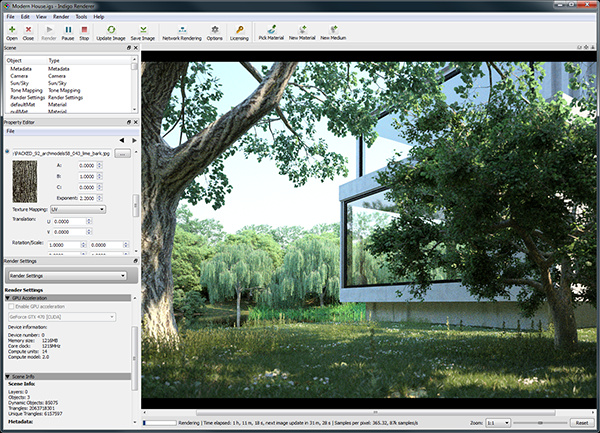
Image Credit: Impulse / Heiko Schmidt
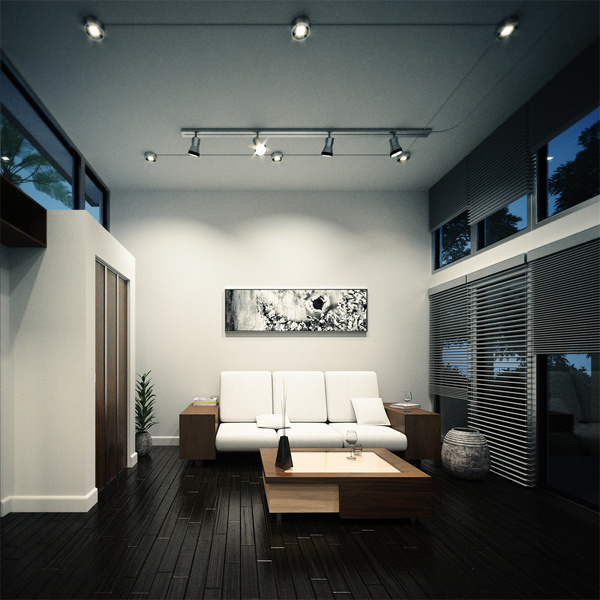
Image Credit: Tom Svilans, http://tomsvilans.com/
--
Nicholas ChapmanManaging Director,
Glare Technologies Limited -
Looks really cool Dale, I gotta try it out.
-
I am very interested in the RT version as it looks to be very fast.
I am going to try the demo tonight. If anybody posts some images could you tell me how long they took to render?
Looks cool and good price.
Thanks!
Stuart
(Hey Dale I used to live in Calgary and often played volleyball at the University of Sask! + I am also a structural engineer)
-
gotta say, it's a lot faster !!
these are 2000px wide renders @ 2minutes (downsized in order to attach here)
the computer used is a quad xeon 2.66 with a GeForce 8800GT 512MB card. (macpro circa 2006)
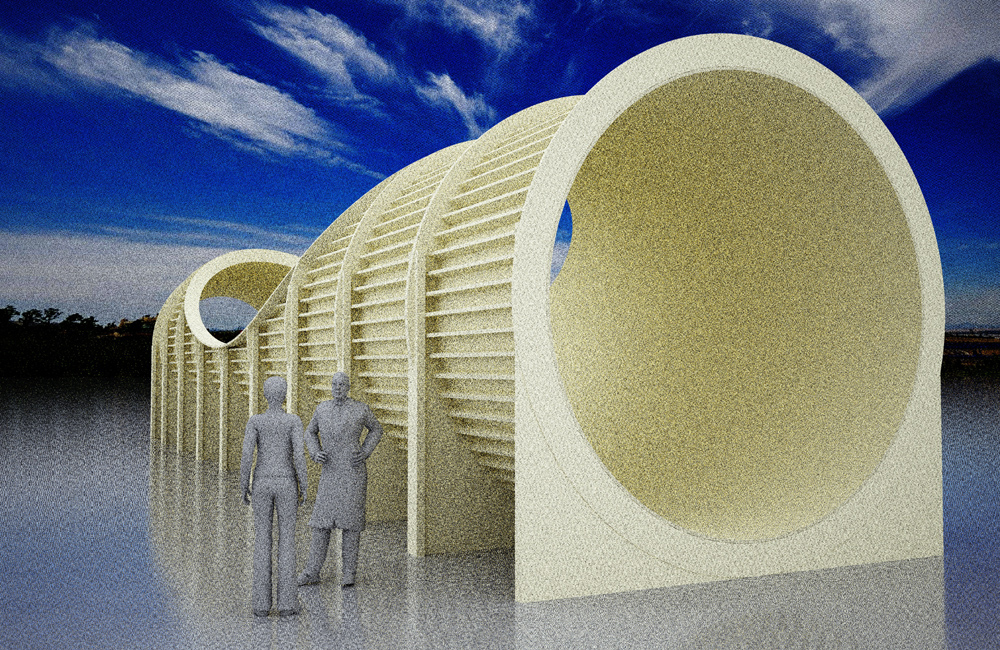
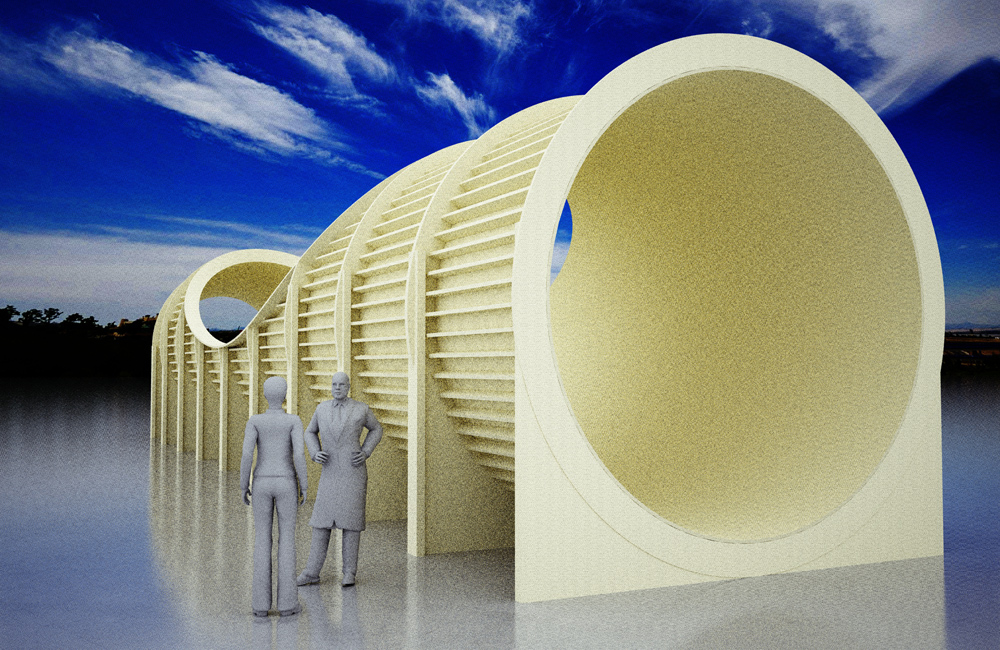
pretty hyped that i was one of the first 100 people to buy indigo
 (free upgrades for life)
(free upgrades for life) -
Jeff would Indigo RT be enough to start with? I have Kerky and Thea both great products but I have a need for speed!
thanks!
S
-
@tallbridgeguy said:
Jeff would Indigo RT be enough to start with? I have Kerky and Thea both great products but I have a need for speed!
thanks!
S
yeah, RT looks pretty sweet -- especially when doing the feature/cost comparison.. the main thing i'd personally miss in RT is the lack of light layers.
http://www.indigorenderer.com/product-comparisonas far as speed.. Indigo isn't the fastest thing out there even after this update.. i'm willing to bet that Thea is still faster.
it's just that Indigo is an unbiased render engine which generally takes a long time to create a clean image but that long time just got shortened 2-3X..(ie- 3-4hr render instead of 8-9 or so)dunno, i'd say to try out the trial versions..
-
@tallbridgeguy said:
Jeff would Indigo RT be enough to start with?(...)
Jeff's right. If speed is your main concern, Indigo isn't the way to go. If you own Thea, you may want to get acquainted with it's biased engine.
That said, Indigo may be slow, but it beats Thea, Maxwell and Fry with regards to output quality. Er, IMHO.
-
Is Indigo RT faster than Realtime Thea? Did anyone make any comparison?
-
@unknownuser said:
Jeff's right. If speed is your main concern, Indigo isn't the way to go.
Everyone needs to be very careful about comparing speeds of the different rendering engines. Many people think of Indigo (and other unbiased engines) as 'slow'. You can't just compare render times and judge solely based on that. You have to look at the overall workflow to produce a final image (and what quality that image will be). This includes setup time, test renders, tweaking of settings, and post production. These are all 'human labor' hours and cost a lot more money than machine rendering time.
With Indigo, you will find that these 'human' hours can be greatly reduced and the final image quality is second to none. You can spend hours tweaking settings and materials with some other rendering engines only to get an image that pales in comparison to an Indigo render that was done without adjusting any settings at all. So what if the render took 30 minutes to process instead of 5?
Just to give you a reasonable idea of speed, I am currently running Indigo 3.0 on an i7 laptop with a GTX 460M GPU (no network rendering). Usually, I am rendering 4-6 megapixel exterior shots lit with environment maps. In most cases, I have an image ready for post production in less than 30 minutes of rendering time. (Keep in mind that this rendering time is not idle human time...I can continue to work in SketchUp or Photoshop). If I were on an i7 desktop system with a GTX 460 GPU, I would expect those render times to be around 20 minutes and I if I were to add just one equivalent networked system, I bet the render times would be around 10 minutes.
My point is that you would be silly to not try Indigo just based on the fact that it's render times may be slower than another app.
-
Mouth-watering.
I bought Octane some time ago but I was disappointed by its limitation to just 32 full-color textures.
Dale, why is Indigo RT so cheap? Is there a limitation on the number of textures, too?
I just found the product comparison chart:
http://www.indigorenderer.com/product-comparisonSeems like I'll be missing SSS and IES. Is there a roadmap for future Indigo RT features?
-
@ecuadorian said:
Dale, why is Indigo RT so cheap? Is there a limitation on the number of textures, too?
No limit on textures. The only limits are what you see in the product comparison chart. I think Indigo RT is priced to target the small business or hobbyist who doesn't typically need the full featureset.
@unknownuser said:
Seems like I'll be missing SSS and IES. Is there a roadmap for future Indigo RT features?
I'm not sure what the roadmap is but I am sure IndigoRT will never sacrifice the image quality that Indigo is known for. -
I downloaded Indigo RT, and I enabled GPU acceleration, and I feel like is slower than disabled, I'm using an ATI FireGl 8600 1G, A core 2 quad cpu Q9550 2.83, am I doing something wrong?
or I need a better video car this one has 320 processors, with a GeForce GTX 590 will run faster?, or not too much.Thanks for any advise.
-
@whaat said:
Many people think of Indigo (and other unbiased engines) as 'slow'. You can't just compare render times and judge solely based on that. You have to look at the overall workflow to produce a final image (and what quality that image will be). This includes setup time, test renders, tweaking of settings, and post production. These are all 'human labor' hours and cost a lot more money than machine rendering time.
Sure. I agree. Still, prospective buyers need to be aware that unbiased rendering as such is relatively slow.
@whaat said:
With Indigo, you will find that these 'human' hours can be greatly reduced and the final image quality is second to none.
True. I own quite a few renderers, and Indigo's output looks best, IMO.
@whaat said:
You can spend hours tweaking settings and materials with some other rendering engines only to get an image that pales in comparison to an Indigo render that was done without adjusting any settings at all.
Sorry, Dale, this is nonsense. Or at least, it only holds true in the case of people who don't know what they're doing.
I -and I'm no exeption- can set up a Vray render in 10 minutes or less, and it sure as hell won't pale compared to an Indigo render. It won't look as good - but the difference will be quite minimal.
http://forums.sketchucation.com/download/file.php?id=19499&mode=view
I will, however, gladly admit Indigo's ease of use is much greater than Vray's. Which in no small part is due to SkIndigo.
@whaat said:
So what if the render took 30 minutes to process instead of 5?
Even with gpu acceleration, there's no way Indigo will do a reasonably sized noise-free image of an indirectly lit interior in 30 minutes. An exterior or a product shot, well, maybe.
@whaat said:
My point is that you would be silly to not try Indigo just based on the fact that it's render times may be slower than another app.
True - but glossing over the facts doesn't do anyone any good.
-
@whaat said:
You can spend hours tweaking settings and materials with some other rendering engines only to get an image that pales in comparison to an Indigo render that was done without adjusting any settings at all.
@stinkie said:
Sorry, Dale, this is nonsense. Or at least, it only holds true in the case of people who don't know what they're doing.
OK, I admit this is a bit of an exaggeration but this was definitely my feeling a few years ago when I was just starting out with rendering. I tried several other rendering engines and could not get Indigo quality output no matter how much I played with the settings. In addition, we continue to hear stories from other new users who echo my sentiments.
@unknownuser said:
I -and I'm no exeption- can set up a Vray render in 10 minutes or less, and it sure as hell won't pale compared to an Indigo render. It won't look as good - but the difference will be quite minimal.
Of course, those more experienced in rendering can adapt to other rendering engines more quickly and get great output regardless of what engine they are using.
Thanks for your comments!
-
@whaat said:
OK, I admit this is a bit of an exaggeration but this was definitely my feeling a few years ago when I was just starting out with rendering. I tried several other rendering engines and could not get Indigo quality output no matter how much I played with the settings.
I remember being positively surprised by the quality Indigo produces without much tinkering as well. And yes, that is a rather big plus. Really stable app, too - I've had only a handful of crashes over the course of the years.
All in all, while I feel there's still room for improvement, Indigo's easily my favorite rendering app. It may not have all the bells and whistles of other unbiased renderers (some I'd like to see added, though!), but with regards to the quality of it's output, I feel it's ahead of the curve.
-
To further elaborate: I've just done a 'product shot' (no environment, single emitter) using path tracing, and I must say 3.0's pt is pretty sweet! I got a clean render in little over 3hrs - and I was rendering at 4000 x 7280.

Edit: I didn't use gpu acceleration.
-
Dale: What kind of GPU will be faster with the new Indigo? A gaming type (GeForce) or a Workstation type (Quadro)? I ask because both Lumion and Octane benefit more from gaming type GPUs, so I bought a GeForce GTX 570.
Also, although Indigo RT has no SSS, does it have thin translucency, as found, for example, in tree leaves and shoji screens?
BTW, when I activate GPU Acceleration, I can't use MLT or bidirectional Path Tracing, only plain old Path Tracing.

-
Small 30-second Path Tracing test:
Indigo RT, Core i5 750:
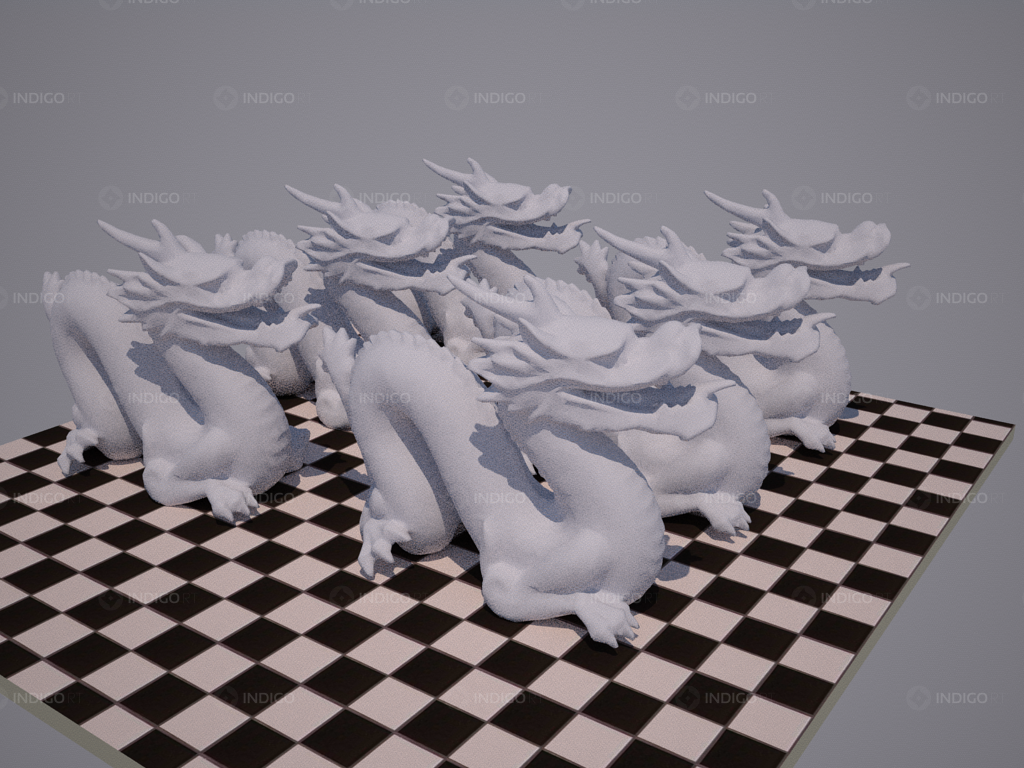
Indigo RT, Core i5 750 + GTX 570 (CUDA):

Indigo RT, Core i5 750 + GTX 570 (OpenCL):

-
@ecuadorian said:
Dale: What kind of GPU will be faster with the new Indigo? A gaming type (GeForce) or a Workstation type (Quadro)? I ask because both Lumion and Octane benefit more from gaming type GPUs, so I bought a GeForce GTX 570.
Also, although Indigo RT has no SSS, does it have thin translucency, as found, for example, in tree leaves and shoji screens?
BTW, when I activate GPU Acceleration, I can't use MLT or bidirectional Path Tracing, only plain old Path Tracing.

Hi,
I'm not the best to answer these questions. I think this type of question has been asked a few times on the Indigo forums so I would suggest searching there or emailing Indigo support. I suspect that the gaming card will be the best bang for your buck.
I do know that Indigo RT does support thin translucency (called Diffuse Transmitters in Indigo). GPU acceleration of MLT is a very new technology and I know that Glare is actively pursuing this as well but it has not yet been implemented.
-
I´m sorry but what do you mean with 32 full-color textures? what format is that? *.tga, *.tif? 32 rgba?
Advertisement







